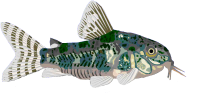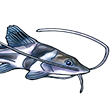Male BN Plecos
- Taratron
- Posts: 813
- Joined: 03 Feb 2003, 16:46
- I've donated: $40.00!
- My cats species list: 1 (i:0, k:0)
- Location 1: Arizona, USA
- Location 2: Phoenix, AZ
- Interests: Fish, herps, the Discworld novels, Invader Zim, and entomology
Male BN Plecos
This is an odd question, but I've found no answers elsewhere. Why exactly do male ancistrus have the infamous bristles? I've never seen my male use them in his brawls, and I don't think the bristles would be good for aeration of eggs. So...why evolve bristles at all?
But if you tame me, then we shall need each other. To me, you will be unique in all the world. To you, I will be unique in all the world..... You become responsible, forever, for what you have tamed.
~Antoine de Saint-Exupery
~Antoine de Saint-Exupery
- Shane
- Expert
- Posts: 4646
- Joined: 30 Dec 2002, 22:12
- My articles: 69
- My images: 162
- My catfish: 75
- My cats species list: 4 (i:0, k:0)
- My aquaria list: 4 (i:4)
- Spotted: 99
- Location 1: Tysons
- Location 2: Virginia
- Contact:
One school of thought is that the tentacles (bristles) are a form of fry mimicry. Females think the male is already guarding fry and thus is a succesful parent. I see no reason not to believe this as I have noted other Ancistrinae males "fanning" like mad in a cave with no eggs. I believe this fanning to be a form of egg mimicry.
-Shane
-Shane
"My journey is at an end and the tale is told. The reader who has followed so faithfully and so far, they have the right to ask, what do I bring back? It can be summed up in three words. Concentrate upon Uganda."
Winston Churchill, My African Journey
Winston Churchill, My African Journey




